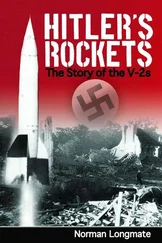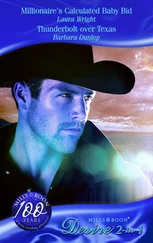Mike Mullane - Riding Rockets
Здесь есть возможность читать онлайн «Mike Mullane - Riding Rockets» весь текст электронной книги совершенно бесплатно (целиком полную версию без сокращений). В некоторых случаях можно слушать аудио, скачать через торрент в формате fb2 и присутствует краткое содержание. Жанр: Старинная литература, на английском языке. Описание произведения, (предисловие) а так же отзывы посетителей доступны на портале библиотеки ЛибКат.
- Название:Riding Rockets
- Автор:
- Жанр:
- Год:неизвестен
- ISBN:нет данных
- Рейтинг книги:3 / 5. Голосов: 2
-
Избранное:Добавить в избранное
- Отзывы:
-
Ваша оценка:
- 60
- 1
- 2
- 3
- 4
- 5
Riding Rockets: краткое содержание, описание и аннотация
Предлагаем к чтению аннотацию, описание, краткое содержание или предисловие (зависит от того, что написал сам автор книги «Riding Rockets»). Если вы не нашли необходимую информацию о книге — напишите в комментариях, мы постараемся отыскать её.
Riding Rockets — читать онлайн бесплатно полную книгу (весь текст) целиком
Ниже представлен текст книги, разбитый по страницам. Система сохранения места последней прочитанной страницы, позволяет с удобством читать онлайн бесплатно книгу «Riding Rockets», без необходимости каждый раз заново искать на чём Вы остановились. Поставьте закладку, и сможете в любой момент перейти на страницу, на которой закончили чтение.
Интервал:
Закладка:
Dave was known by his navy call sign, Red Flash, bestowed on him for his red hair. (Air force flyers of my era did not have personal call signs, as those in the navy did.) Over several months Red Flash and I, along with the other TFNG chase crews, practiced shuttle rendezvous with ground-based radar personnel. One T-38 would simulate the landing shuttle while the others would be vectored toward it by the radar controllers, as would be the case if Columbia made an emergency White Sands landing.
During this training, trajectory engineers in Houston asked us to examine other dry lakebeds in southern New Mexico and Texas as potential emergency landing sites for Columbia. They wanted to cover every contingency, including “low energy” trajectory errors that might prevent the shuttle from reaching the White Sands runway or “high energy” errors that would result in the shuttle overflying White Sands completely. Their fears were well founded. When Columbia came to Earth, it would do so as a powerless glider. It had no engines the pilots could use to fly around and search for a runway. If there wasn’t a suitable landing site within reach, Young and Crippen would have to eject and Columbia would crash.
Day after day, Red Flash and I would take off from El Paso and search the Chihuahuan desert for twelve thousand feet of straight, flat, firm earth. And day after day, I would return to El Paso with my butt cheeks fatigued from an hour of ass-clinching fear. It wasn’t that Dave was a bad pilot. Rather he was too cocky, the type of pilot who thinks he’s bulletproof even when he’s sober. (All fighter pilots think they’re bulletproof when they’re intoxicated.) He was the pilot that backseaters had in mind when they had coined this joke:
Question: “What are the last words a dead backseater ever hears from his pilot?”
Answer: “Watch this.”
I was living that grim joke in Dave’s backseat. When we spied a likely playa from altitude, Dave would say, “Watch this,” and dive for the sand. To my left or right I would see our plane’s shadow paralleling us at 300 knots. It would porpoise over hill and dale, quickly drawing closer and closer as Dave dropped lower and lower, until it finally disappeared underneath us. If our jet had had the curb-feelers of a ’59 Edsel, I would have heard them scratching a warning into the desert a foot underneath us. Our engine exhaust had to be frying lizards, snakes, prairie dogs, and other ground-hugging fauna. And while I was white with fear, Dave was jotting observations about the condition of the terrain on his knee board.
In the early morning hours of April 12, 1981, Dave and I and the rest of the chase team were in the El Paso airport flight operations office, gathered around a TV watching the final moments of Columbia ’s countdown. The previous night I had slept lightly and each time I awoke I would pray for Young and Crippen. I had a strong sense of dread about the mission. When Columbia ’s hold-down bolts blew, her crew would be irrevocably committed to a flight that was more experimental than any manned flight in history. Forget Alan Shepard, John Glenn, or Neil Armstrong as astronauts who had taken unequaled gambles. Their Redstone, Atlas, Titan, and Saturn rockets had all been proven before they had ever climbed on board. Young and Crippen would be making history by riding a rocket on its very first launch. They weren’t doing so reluctantly. The astronaut office had no problems with this decision, even though it would have been relatively easy to modify the vehicle to fly a first test mission unmanned. (In 1988 the Russians successfully flew, unmanned, the first and only mission of their space shuttle. It made two orbits of the Earth then flew under autopilot control to a perfect touchdown.) While the manned/unmanned debate over Columbia ’s maiden flight had occurred before TFNGs had arrived at NASA, I could easily guess how long astronauts had discussed the topic before concluding a manned flight was the way to go…about five seconds. Astronauts will always be ready to jump into a cockpit. Any cockpit. Any time. There wasn’t a single TFNG who wouldn’t have volunteered to be ballast aboard Columbia.
But Young and Crippen would be taking an enormous risk and I feared for their lives. The only thing that had been positively demonstrated about the shuttle design was that it would glide from 25,000 feet to a landing. Four flight tests off the back of a 747 carrier aircraft had proven that. The solid rocket boosters and SSMEs had been ground-tested multiple times but had never actually flown in space. In fact, the SRBs had never even been tested vertically. In each of their firings, the rocket had been in a horizontal position, a fact that made many of us doubt the tests were really duplicating the stresses and strains of a vertical launch. The massive gas tank had never experienced the shake, rattle, and roll of a launch. There had been no full-scale flight tests of the 24,000-heat-tile mosaic that was glued to Columbia ’s belly. How would it do in the 17,000-mile-per-hour, 3,000-degree wind of reentry? And no spacecraft had ever glided 12,000 miles to a “one-chance” landing—but that’s exactly what Columbia was going to have to do. And the unknowns weren’t just in the STS hardware. The shuttle’s computer system contained hundreds of thousands of lines of code. Billions of dollars and years of labor had been spent to validate that software but there were still thousands of permutations that had not been tested and that could contain fatal flaws. Would an engine failure at precisely T+1:13 in conjunction with an unexpected wind sheer at 65,000-feet altitude cause a software switch in some black box to flip to a different polarity and send Columbia out of control? To an extent never before seen in spaceflight, the space shuttle was certified to carry astronauts based upon the wizardry of computer modeling. For a decade, engineers conducted thousands of ground tests in every imaginable engineering specialty: aeronautical, electrical, chemical, mechanical, hypersonic flight dynamics, cryogenic fluid dynamics, propulsion, flutter dynamics, aeroelasticity, and a hundred others. They digitized data gleaned from wind tunnel tests, engine tests, hydraulic tests, heat tile tests, and flight control tests and dumped the results into computers humming with the equations of Max Planck, Bernoulli, and Fourier. When the thousands of answers were finally assembled and examined, the engineers cheered. Computer models said their new shuttle system would work, that its twin SRBs and three SSMEs burning 4 million pounds of propellant in 81/ 2minutes would propel a quarter-million-pound winged orbiter to a speed of nearly 5 miles per second and an altitude of 200 miles. These same models also assured their brainy authors the orbiter would be able to make a powerless hemispheric-long glide to a 15,000-foot-long strip of runway. Of course, many of these same engineers had done the same thing in the development of the Redstone, Atlas, Titan, and Saturn rockets of the past manned programs, but in those programs, after all their testing and modeling were complete and the answer was “This rocket will fly,” they had still walked cautiously. “We could be wrong in this model, or maybe in this model, or in this one,” they had said. “We better test this puppy unmanned a couple times before we strap astronauts to it. And when we do, we better give the crew a way of surviving a booster failure through all of ascent.” And they had. But not with the space shuttle. Its cherry flight was going to be manned. The engineers had foreseen the possibility of catastrophe and had included SR-71 Blackbird ejection seats for the two-man crew, but those were only usable during the first two minutes of launch; after that, the shuttle would be too high and too fast for an ejection seat bailout. The seats wouldn’t again be usable until the shuttle was below about 100,000 feet and Mach 3.0, about ten minutes prior to landing. During the rest of the ride Crippen and Young would have zero chance of escape. Actually, the two-minute launch envelope of the ejection seat was even suspect. Many felt there was a good chance an ejection during launch would send them through the 5,000-degree plume of the SRBs. They would be vaporized. There was no doubt about it. Young and Crippen were human guinea pigs like no other astronauts before. It was another manifestation of Apollo hubris. Mere mortals might not be able to certify a rocket as man-ready with computers, but the gods of Apollo could.
Читать дальшеИнтервал:
Закладка:
Похожие книги на «Riding Rockets»
Представляем Вашему вниманию похожие книги на «Riding Rockets» списком для выбора. Мы отобрали схожую по названию и смыслу литературу в надежде предоставить читателям больше вариантов отыскать новые, интересные, ещё непрочитанные произведения.
Обсуждение, отзывы о книге «Riding Rockets» и просто собственные мнения читателей. Оставьте ваши комментарии, напишите, что Вы думаете о произведении, его смысле или главных героях. Укажите что конкретно понравилось, а что нет, и почему Вы так считаете.












